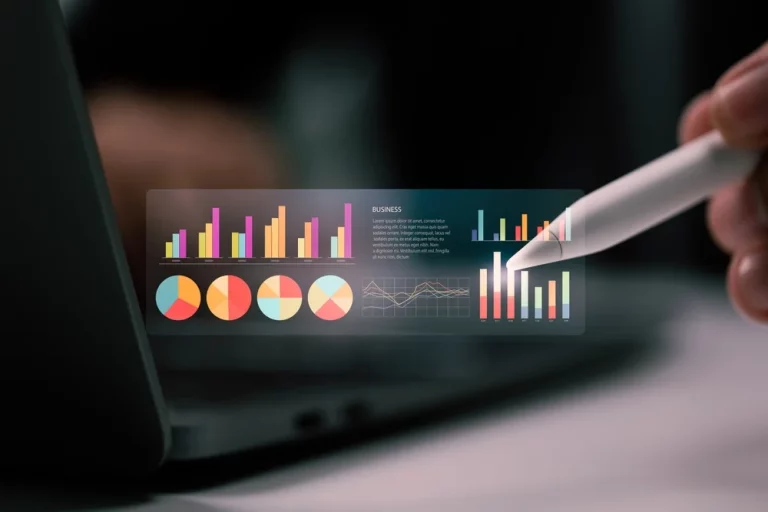The Future of Digital Marketing – Trends to Watch in 2024

Digital marketing continues to evolve at a rapid pace, driven by advancements in technology, shifts in consumer behaviour, and changes in the global business landscape. As we move into 2024, businesses must stay ahead of these trends to remain competitive and effective in their marketing efforts. This article will explore the key trends in digital marketing for 2024, offering insights into how businesses can adapt and thrive in this dynamic environment.
1. The Rise of AI-Powered Marketing
Artificial intelligence (AI) has been a game-changer in digital marketing over the past few years, and its influence is set to grow even further in 2024. AI is transforming how businesses understand and engage with their customers, offering more personalised and efficient marketing strategies.
1.1 Personalisation at Scale
One of the most significant benefits of AI in digital marketing is its ability to deliver personalised experiences at scale. AI algorithms can analyse vast amounts of data to understand individual customer preferences, behaviours, and needs. This enables businesses to create highly targeted marketing campaigns that resonate with specific audiences.
- Dynamic Content: AI can help marketers create dynamic content that changes based on the user’s behaviour and preferences. For example, an e-commerce site might show different products to different users based on their browsing history and purchase patterns.
- Predictive Analytics: AI-driven predictive analytics can forecast future customer behaviours and trends, allowing businesses to proactively tailor their marketing strategies.
1.2 Chatbots and AI-Powered Customer Service
AI-powered chatbots are becoming increasingly sophisticated, providing real-time customer support and personalised recommendations. In 2024, we can expect chatbots to become even more integral to customer service, handling more complex queries and delivering seamless customer experiences.
- Natural Language Processing (NLP): Advances in NLP will enable chatbots to understand and respond to customer queries more naturally and accurately, improving the overall user experience.
- 24/7 Availability: Chatbots offer round-the-clock customer support, ensuring that customers receive assistance whenever they need it, regardless of time zones.
1.3 AI in Content Creation
AI is also making strides in content creation, with tools that can generate blog posts, social media updates, and even video scripts. While AI-generated content is not yet at the level of human creativity, it can be an excellent tool for producing large volumes of content quickly and efficiently.
- Automated Writing Tools: AI-powered writing tools can help marketers create content faster, from generating ideas to drafting entire articles. These tools can also assist in optimising content for SEO.
- AI-Generated Visuals: AI can create images, infographics, and even videos, allowing marketers to produce visually appealing content without extensive design expertise.
2. The Growing Importance of Privacy and Data Protection
As digital marketing becomes more data-driven, concerns about privacy and data protection are increasingly coming to the forefront. In 2024, businesses will need to navigate the complex landscape of data privacy regulations and build trust with consumers by being transparent and ethical in their data practices.
2.1 Evolving Data Privacy Regulations
Governments worldwide are enacting stricter data privacy laws, and businesses must stay compliant to avoid hefty fines and reputational damage. The General Data Protection Regulation (GDPR) in the European Union has set the standard, but similar laws are being introduced in other regions.
- Consent Management: Marketers will need to implement robust consent management systems to ensure that they collect, store, and use customer data legally and ethically.
- Data Minimisation: Businesses should adopt a data minimisation approach, collecting only the data that is necessary for their marketing activities.
2.2 Building Trust Through Transparency
With growing concerns about data privacy, transparency is crucial in building and maintaining customer trust. In 2024, businesses that are open about how they collect and use customer data will have a competitive advantage.
- Clear Privacy Policies: Businesses should have clear and accessible privacy policies that explain how customer data is used and protected.
- User Control: Offering users more control over their data—such as the ability to opt out of data collection or delete their data—can enhance trust and improve customer relationships.
2.3 The End of Third-Party Cookies
The phase-out of third-party cookies by major browsers is set to be completed in 2024, marking a significant shift in digital marketing. Without third-party cookies, marketers will need to find new ways to track users and deliver personalised ads.
- First-Party Data: Collecting first-party data—data that customers willingly share with a business—will become more important. This includes data from website interactions, purchase history, and customer feedback.
- Contextual Advertising: With less reliance on tracking cookies, contextual advertising—where ads are placed based on the content of the webpage—will gain prominence. This approach ensures that ads are relevant to the user’s immediate context.
3. The Expansion of Video Marketing
Video content continues to dominate digital marketing, and its importance is set to grow even further in 2024. Consumers are increasingly turning to video for information, entertainment, and purchasing decisions, making it a vital component of any marketing strategy.
3.1 Short-Form Video Content
Short-form video content, popularised by platforms like TikTok and Instagram Reels, is highly engaging and shareable. In 2024, more businesses will embrace short-form videos to capture the attention of younger audiences.
- Bite-Sized Content: Short videos are perfect for conveying messages quickly and effectively. They are ideal for product demos, behind-the-scenes glimpses, and quick tutorials.
- Platform Integration: Businesses should focus on creating videos that are optimised for social media platforms, where short-form content thrives.
3.2 Live Streaming and Interactive Video
Live streaming has gained popularity as a way for brands to connect with their audience in real time. In 2024, live streaming will continue to grow, with more businesses using it for product launches, Q&A sessions, and virtual events.
- Real-Time Engagement: Live streaming allows for real-time interaction with viewers, making it a powerful tool for building community and trust.
- Shoppable Videos: Interactive videos that allow viewers to purchase products directly from the video are becoming more common. This trend is set to increase as e-commerce and video marketing continue to converge.
3.3 Video SEO
As video content becomes more prevalent, optimising videos for search engines (video SEO) will be crucial. Businesses need to ensure that their videos are easily discoverable by using relevant keywords, descriptions, and tags.
- Optimising for YouTube: YouTube remains the second largest search engine globally. Optimising videos for YouTube can significantly increase visibility and drive traffic to your website.
- Video Transcriptions: Including transcriptions and closed captions in videos not only makes content more accessible but also improves SEO by providing additional text for search engines to crawl.
4. The Continued Growth of Voice Search and Smart Speakers
Voice search is becoming an increasingly popular way for consumers to find information and make purchases online. With the proliferation of smart speakers like Amazon Echo and Google Home, voice search is set to be a major trend in 2024.
4.1 Optimising for Voice Search
Voice search differs from traditional text search in that it tends to be more conversational and question-based. Businesses will need to adapt their SEO strategies to account for these differences.
- Long-Tail Keywords: Optimising for long-tail keywords that reflect how people speak rather than type will be essential. For example, instead of targeting the keyword “digital marketing,” a business might target the phrase “What are the latest trends in digital marketing?”
- Featured Snippets: Appearing in featured snippets—short, concise answers that appear at the top of search engine results—can significantly improve visibility in voice search results.
4.2 Voice-Activated Shopping
As more consumers use voice search to make purchases, businesses must ensure their products are easily accessible through voice-activated devices.
- Product Listings: Ensuring that products are listed on platforms that support voice-activated shopping, such as Amazon, can help capture this growing market.
- Voice Commerce Integration: Businesses with e-commerce sites should explore integrating voice commerce capabilities, allowing customers to make purchases using voice commands.
4.3 Local SEO for Voice Search
Voice search is often used for local queries, such as finding nearby restaurants or shops. Optimising for local SEO is crucial for businesses looking to attract local customers through voice search.
- Location-Based Keywords: Incorporating location-specific keywords into your website content can improve your chances of appearing in local voice search results.
- Google My Business Optimisation: Ensuring your Google My Business listing is up-to-date and optimised will help you appear in local voice search results, especially for “near me” queries.
5. The Emergence of Augmented Reality (AR) in Marketing
Augmented reality (AR) is no longer a futuristic concept; it is becoming a mainstream tool in digital marketing. In 2024, more businesses will adopt AR to create immersive and interactive experiences for their customers.
5.1 AR in E-Commerce
AR is revolutionising e-commerce by allowing customers to visualise products in their real-world environment before making a purchase. This can lead to increased customer satisfaction and reduced return rates.
- Virtual Try-Ons: AR technology enables customers to try on clothes, accessories, or makeup virtually, helping them make more informed purchasing decisions.
- Product Visualisation: For home decor or furniture, AR allows customers to see how products would look in their space, enhancing the online shopping experience.
5.2 AR in Advertising
AR can make advertising more engaging by turning static ads into interactive experiences. In 2024, we can expect to see more AR-powered ads across social media and digital platforms.
- Interactive Ads: AR ads that allow users to interact with the brand or product in a meaningful way can capture attention and increase engagement.
- AR Filters: Brands can create AR filters for social media platforms like Instagram and Snapchat, allowing users to engage with the brand in a fun and creative way.
5.3 AR in Experiential Marketing
Experiential marketing, which focuses on creating memorable experiences for customers, can be enhanced with AR. Events, pop-up stores, and product launches can all benefit from AR elements that immerse customers in the brand experience.
- Immersive Events: AR can be used to create immersive experiences at events, such as virtual tours or interactive product demonstrations.
- Gamification: Incorporating AR into gamified experiences can make marketing campaigns more engaging and shareable.
6. The Importance of Sustainability in Digital Marketing
As consumers become more environmentally conscious, sustainability is becoming a key consideration in digital marketing. In 2024, businesses that prioritise sustainability in their marketing strategies will resonate more with consumers.
6.1 Green Marketing
Green marketing involves promoting products or services based on their environmental benefits. In 2024, more businesses will focus on green marketing to attract eco-conscious consumers.
- Sustainable Products: Highlighting the sustainability of products, such as using eco-friendly materials or ethical sourcing, can differentiate a brand in the marketplace.
- Environmental Messaging: Incorporating environmental messaging into marketing campaigns can appeal to consumers who prioritise sustainability in their purchasing decisions.
6.2 Reducing Digital Carbon Footprint
Digital marketing activities, such as email campaigns and website hosting, contribute to carbon emissions. Businesses will need to consider their digital carbon footprint and find ways to reduce it.
- Sustainable Hosting: Choosing web hosting providers that use renewable energy can help reduce the environmental impact of your website.
- Efficient Campaigns: Streamlining digital marketing campaigns to use fewer resources—such as optimising images for faster loading times—can reduce the carbon footprint.
6.3 Transparency in Sustainability Claims
As more businesses adopt green marketing, transparency in sustainability claims will be crucial. Consumers are increasingly wary of greenwashing—where companies falsely claim to be environmentally friendly—so honesty and transparency are essential.
- Third-Party Certifications: Obtaining third-party certifications for sustainability efforts can build credibility and trust with consumers.
- Clear Communication: Clearly communicating the steps your business is taking to be more sustainable can help build a loyal customer base that values environmental responsibility.
7. The Evolution of Social Commerce
Social commerce—the integration of e-commerce and social media—is set to grow in 2024, offering new opportunities for businesses to reach and engage customers directly on social platforms.
7.1 Shoppable Posts
Shoppable posts allow users to purchase products directly from social media posts without leaving the platform. This seamless shopping experience is becoming more popular, particularly on platforms like Instagram and Facebook.
- Tagging Products: Businesses can tag products in their posts, making it easy for users to view product details and make a purchase with just a few clicks.
- Social Storefronts: Creating a storefront on social media platforms allows businesses to showcase products and drive sales directly from their social profiles.
7.2 Influencer Partnerships
Influencer marketing continues to be a powerful tool in digital marketing, and its role in social commerce is growing. Influencers can drive sales by promoting products through their social channels and providing affiliate links for direct purchases.
- Authentic Partnerships: Partnering with influencers who genuinely align with your brand values can lead to more authentic and effective social commerce campaigns.
- Affiliate Marketing: Influencers can use affiliate links to earn commissions on sales generated through their promotions, creating a mutually beneficial relationship.
7.3 User-Generated Content
User-generated content (UGC) is a powerful form of social proof that can drive sales. Encouraging customers to share their experiences with your products on social media can increase brand visibility and credibility.
- Hashtag Campaigns: Creating a branded hashtag for customers to use when sharing their experiences can help collect and showcase UGC on your social profiles.
- Customer Reviews: Featuring customer reviews and testimonials on social media can build trust and influence purchasing decisions.
| Section | Description |
|---|---|
| AI-Powered Marketing | AI is transforming personalisation, customer service, and content creation, enabling businesses to deliver more targeted and efficient marketing strategies. |
| Privacy and Data Protection | As data privacy regulations tighten, businesses must adopt transparent and ethical data practices, focusing on first-party data and contextual advertising. |
| Video Marketing | Video content, particularly short-form and live streaming, continues to dominate, requiring businesses to optimise their video strategies for better engagement. |
| Voice Search | With the rise of smart speakers, optimising for voice search and local SEO is essential for capturing voice-activated queries and increasing visibility. |
| Augmented Reality (AR) | AR is enhancing e-commerce and advertising, offering immersive experiences that allow customers to interact with products in new and engaging ways. |
| Sustainability in Marketing | As consumers prioritise environmental responsibility, businesses must focus on sustainability in their marketing efforts to build trust and loyalty. |
| Social Commerce | The integration of e-commerce and social media is growing, with shoppable posts, influencer partnerships, and user-generated content driving sales. |
Conclusion
The future of digital marketing in 2024 is shaped by technological advancements, changing consumer expectations, and a growing focus on privacy and sustainability. To stay competitive, businesses must adapt to these trends and leverage new tools and strategies to engage their audiences effectively.
From AI-powered personalisation to the rise of AR and the importance of sustainability, the trends outlined in this article offer valuable insights into the evolving digital marketing landscape. By embracing these trends, businesses can position themselves for success in 2024 and beyond, ensuring that their marketing efforts remain relevant, effective, and impactful.
Contact Us
You can contact us on Whatsapp:
or fill up the contact form





